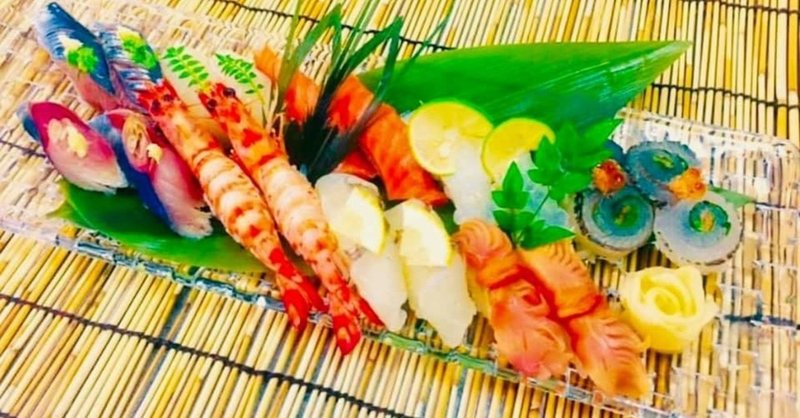
The sushi samurai reported. "Nisushi sushi boom started from the United States and its problems"
世界60カ国をまわり、安全でおいしい日本の寿司を伝えるとともに、寿司職人の指導や地位向上にも努めている寿司職人、小川洋利さん。日本では、TBS『ぶっ込みジャパニーズ』のマスクをかぶった寿司職人としても有名です。アメリカ、ヨーロッパ、アジア、アフリカなど、世界各国の変わり寿司ネタの話や、食の安全性、食文化、生魚を取り扱うことの難しさなどについてを伺いました。また、最後にはフィリピン人による寿司ドリームの話も!
Sushi chef Hirotoshi Ogawa has traveled to 60 countries around the world to deliver safe and delicious Japanese sushi, and has been working to guide and improve the status of sushi chefs.
In Japan, he has also appeared on the TBS television program Bukkake Japanese with a mask, teaching people around the world how to make sushi.
He talked about change sushi in the United States, Europe, Asia and Africa, and talked about food safety, food culture, and the difficulty of handling raw fish. Finally, he talked about the Philippine sushi dream.
The Norwegian capital Oslo "NORDIC SUSHI CUP" was held in Oslo.

On March 8, 2020, I asked Ogawa about this story. Mr.Ogawa is currently staying in Oslo, Norway.
"We've just finished the NORDIC SUSHI CUP for three days until yesterday, so we were drinking with our friends until midnight."
Mr. Ogawa participated in "NORDIC SUSHI CUP" as a judge. This event is the Norwegian Championship for Norwegian sushi chefs. A selection of 20 top chefs will be judged based on traditional Japanese Zen. All chefs are professionals with more than 5 years experience.
In November 2020, "World Sushi Cup 2020" will be held in Tokyo, Japan. The winner will be in the finals of the event.
NORDIC SUSHI CUP=ノルウェーで開催された寿司の大会、judge=判断する、Japanese Zen=relaxed and not worrying about things that you cannot chang.
"Sabi Omakase" is a sushi specialty restaurant that has won one Michelin star for four consecutive years.
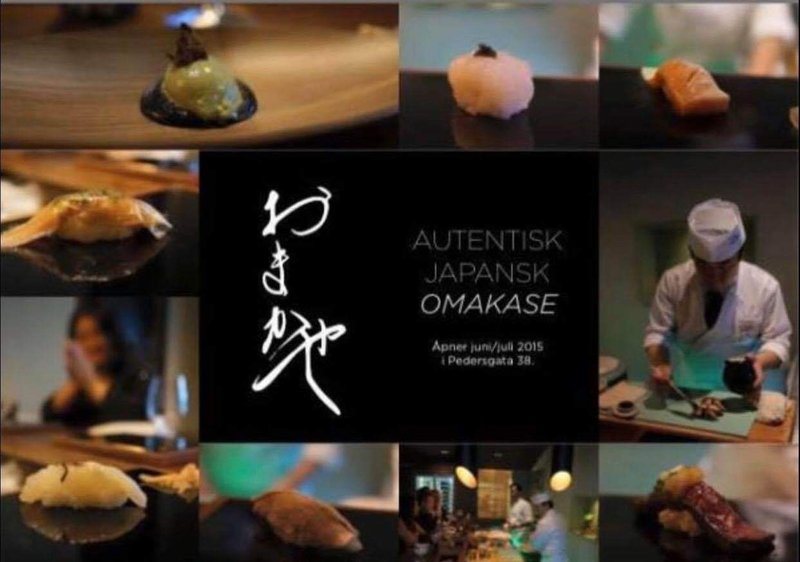
Mr.Ogawa tald. "There are currently only 10 Michelin-starred restaurants in Norway, two of which are sushi specialties, both of which my friends are doing. Sabi Omakase is the Philippines This is a sushi specialty restaurant that has won one Michelin star for four consecutive years at Roger's restaurant, where I wrote the signboard of the shop, sent ingredients from Japan, and developed menus. The store is a memorable place for me.
currently=現在、 Michelin-starred=ミシュランの星、specialty=専門、consecutive=連続する、Roger=フィリピン出身のシェフ
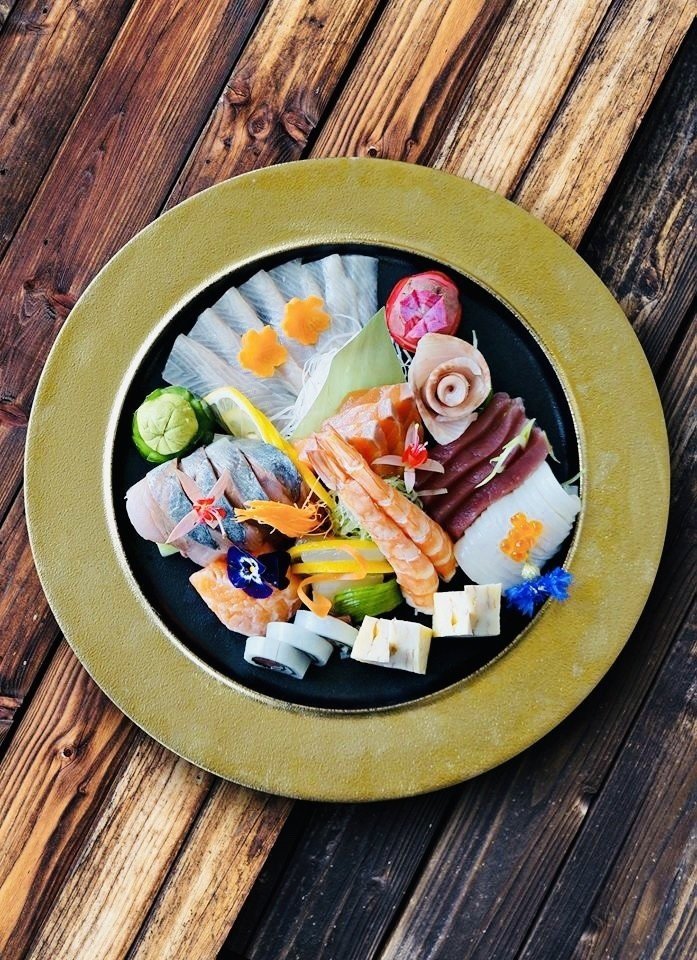
Mr.Ogawa tald. "There are currently only 10 Michelin-starred restaurants in Norway.
Two of them are restaurants specializing in sushi. Both are restaurants that my friends are doing.
“Sabi Omakase” is a Filipino Roger restaurant that has been a sushi specialty restaurant with one Michelin star for four consecutive years.
This is a restaurant where I wrote signboards for restaurants, sent ingredients from Japan, and made a menus. The restaurant is a memorable place for me.
Omakase Oslo is my fellow sushi restaurant.
I met him when he entered the World Sushi Cup in 2013. He told me, "When you come to Norway, I want you to tell me about sushi." Pak from Omakase Oslo met in 2014. He also won the World Sushi Cup Japan Finals Tournament in 2017 and became a world champion, and won one Michelin star this year in 2020. He was on the management side of this tournament. Sabi Omakase and Omakase Oslo are both very popular in Norway. ''
memorable=記憶すべき、Pak=パークさん、popular=評判のよい
Is it possible to bring out the unknown taste, or to maximize the taste of the ingredients by cutting it off?
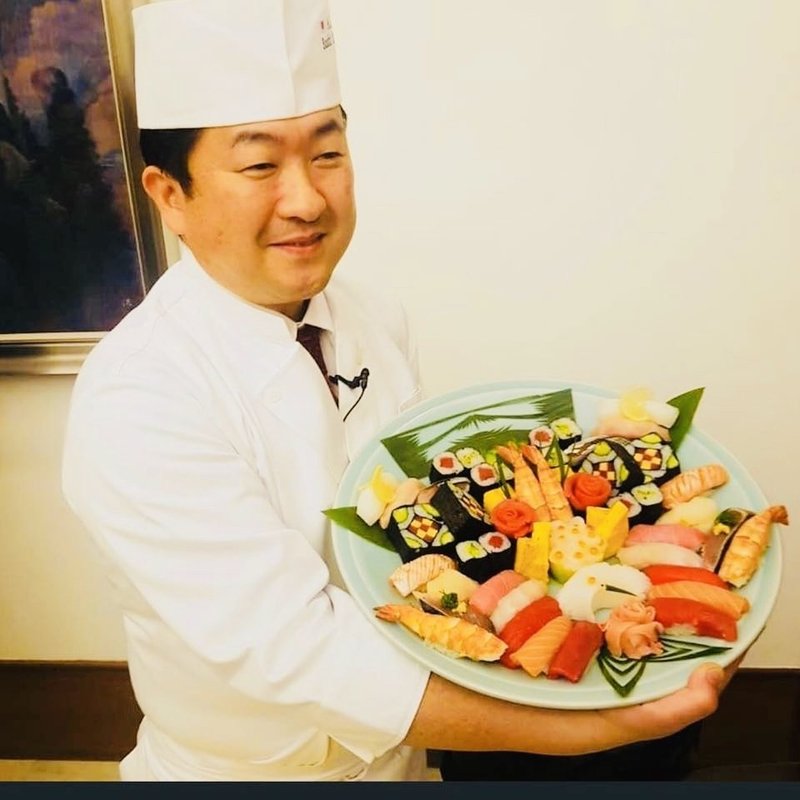
By the way, how much is Japanese sushi known in Norway?
"I visited Norway in 2015. Six years ago, I was still mainly rolled sushi at that time. At that time, the sauce was the decisive factor, so I was able to make full use of the taste of the fish's original ingredients. However, I think that is a natural thing because the food culture is different.
Europe is a source culture that combines ingredients to create an unknown taste. In contrast, Japanese food culture places importance on making the best of the ingredients themselves. That is why food culture is added in Europe, and Japan is a food culture that cuts off unnecessary things.
That is why=このような理由です、ingredient=成分、cuts off=そぎ落とす、unnecessary=不必要な
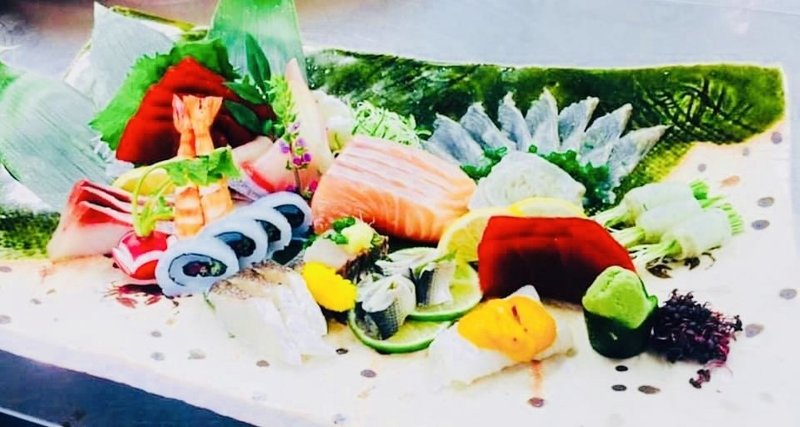
Norway has abundant fish with Hokkaido. Norway ships salmon to Japan, doesn't it? But since Norway has no culture of eating raw fish, we often throw away what we can eat. For example, testicles such as puffer fish and cod are called "shirako " in Japan and are treated as luxury goods, but are discarded locally. For that reason, I made Shirako using what I was supposed to throw away at a restaurant sushi kaiseki event. Then it was accepted as delicious by local people.
doesn't it? =~だよね?、 raw fish=生魚、For example=たとえば、puffer fish=ふぐ、cod=タラ、milt=白子、luxury goods=高級品、accept=受け入れる、restaurant sushi kaiseki event=寿司懐石のイベント、kaiseki=It's a kind of Japanese food.The term refers to a meal served by a host of a party.tenpura is Japanese food.
they don't eat raw fish in Norway.When Norwegian people eat raw fish, they usually eat salted anchovies, smoke and oil.In Norway, too, sushi culture has spread, and fish are being eaten raw gradually.In Norway, traditional Japanese sushi-making sushi has become highly valued.Recently, I have received many requests to teach them how to make sushi."
salted=塩漬けした、anchovy=アンチョビ、Recently=最近、received=受け入れられた、how to make sushi=寿司の握り方、become highly valued=高く評価された
A single film that changes the concept of Western sushi "Jiro Dreams of Sushi"
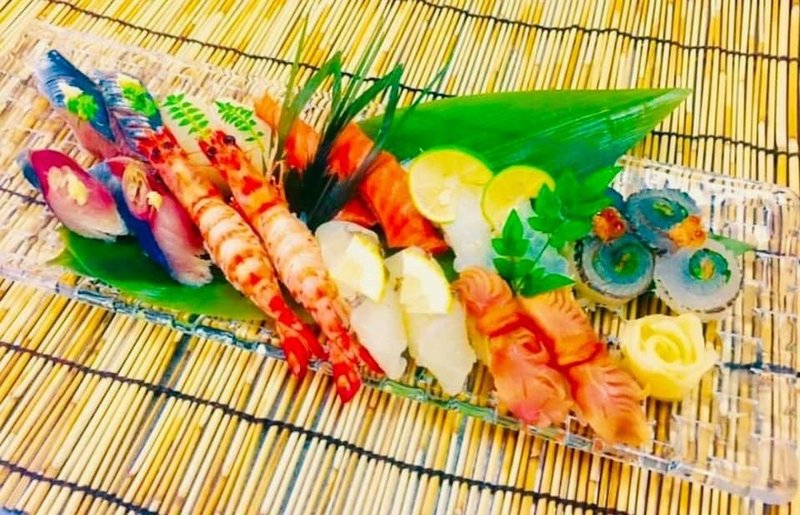
Until now, sushi abroad was like rolled sushi like a California roll. Why did the Japanese nigiri sushi culture spread?
"I think Japanese nigiri sushi was so famous in the world that the movie" Jiro Dreams of Sushi ", which was shown in the United States in 2011, was a major factor."
nigiri sushi=Sushi with rice and fish.、spread=広げる、factor=要因
”Jiro Dreams of Sushi” is a documentary film screened in the United States in 2011. The main character, Mr.Jiro Ono (then, 85 years old), is the owner of Sukiyabashi Jiro. The store is famous for its visit by Prime Minister Abe and former US President Obama.
Jiro Ono spends his whole life holding one sushi. Nigiri sushi has become a boom in the United States through a movie depicting his life.
”Jiro Dreams of Sushi”=『次郎は夢を見る』は、2011年にアメリカで公開された、「すきやばし次郎」の店主を主人公にしたドキュメンタリー映画。Sukiyabashi Jiro=すきやばし次郎(銀座にある高級すし店)、 Prime Minister=首相、holding=握ること、movie depicting his life=彼の人生を描いた映画
"Mr.Jiro is still 90 years old and he still holds sushi today. This movie was talked about by people all over the world. I didn't know the sushi culture. Overseas people saw sushi simply as a sandwich that eats fish on white rice and eats it. , They changed their mindset.
"Omakase" conveys the Japanese master culture.

Strangely, the epidemic always comes from the United States. Even in Japanese culture. Until now, roll sushi was the mainstream in the United States. After Jiro's movie became popular, nigiri sushi became popular.
At restaurants in the United States, the culture of chefs serving sushi directly from the counter has begun to take customer. Until now, chefs have been making sushi in the kitchen at the back of American restaurants. And the waitress provided the chefs with what they made. When you go to a sushi restaurant in Japan, a sushi chef holds sushi in front of their customers.
The sushi chef offers it to customers directly from the counter. This is not very common in the world. In the wake of the city's painting, the word “Omakase,” “Trust me = trust me,” has begun. At a restaurant, “the chef decides what he offers to customers.” That culture was rare in the food industry.
Strangely=不思議なことに、serving=給仕する、directly=直接、customer=顧客、Until now=いままで、at the back of=~の後部に、provided=~という条件で、in front of=~の前に、offers=提供する、common=一般的、rare=まれな、food industry=飲食産業

Japanese sushi restaurants are "master culture". In other words, customers eat the best food of the day, carefully selected by the master of the sushi restaurant. ”Customers must leave everything to the chef and eat as the chef says. Until now, there has been no such culture, but surprisingly, this "master culture" has become popular with foreigners.
Some famous Japanese sushi restaurants refuse to enter customers after 10 minutes from booking. The craftsmanship, which focuses not only on sushi but also on the atmosphere of eating sushi, would have been fresh for overseas customers.
There are three types of craftsmen. One is a master craftsman. The second type is to have the customer choose what they want to eat and hold it. The third is the type of how beautiful it can be made in response to any requests from customers.
I believe that the real professional is how delicious it is to give customers what they want to eat. It's a matter of getting more than what customers want. "
Is there any difference between "first-class" and "the best of the best" among sushi chefs?
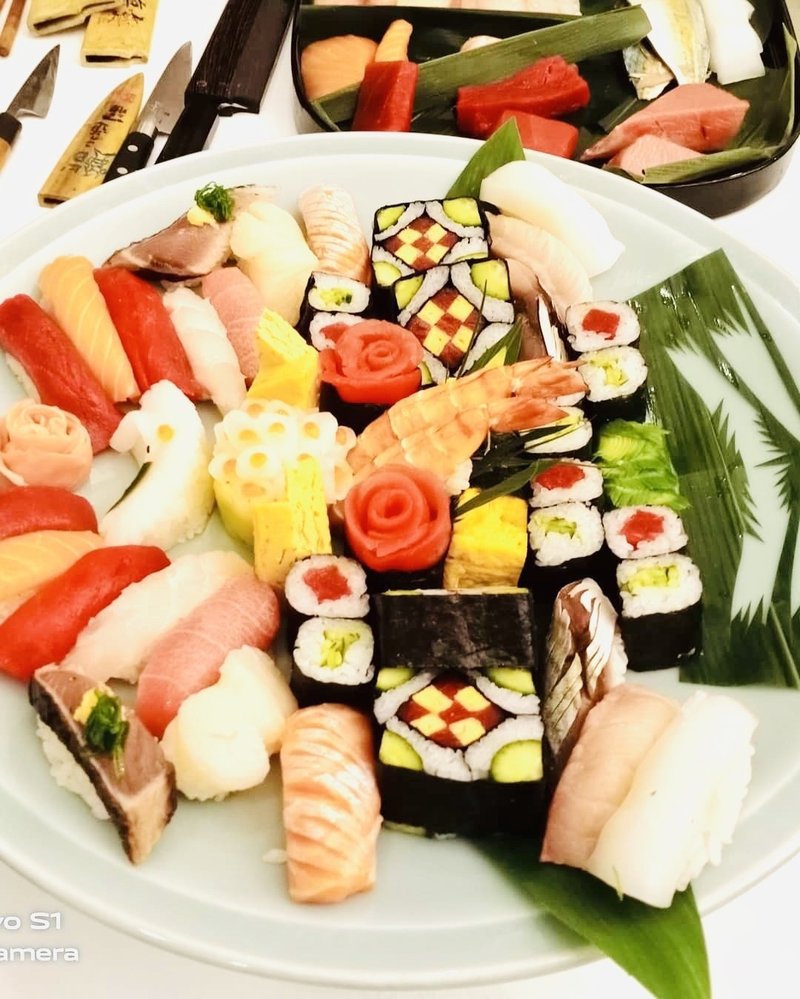
Is there any difference between "first-class" and "the best of the best" among sushi chefs?
"First of all, a non-leading sushi chef is a person who can't make customer requests properly. This is out of the question.
First-rate sushi chefs are the ones who can cater to customers' requests. So what makes the best of the best sushi chefs different?
He can do more than the customer expects.
The best of the best chefs can choose what they recommend and at the same time offer sushi that exceeds their expectations.
Create a cozy dining space by making use of "abandoned eyes, abandoned ears"
"Our craftsmen often use the words abandoned eyes and abandoned ears. They look like they aren't looking at the customer. It means they aren't listening and pay attention to the slight noise.
When the sound of the ice becomes crisp, notice that the drink is almost empty and serve new sour as needed. The same is true for replacing tea. The chef understands what the customer wants now so that the customer is not conscious of the chef's confidence and does not disturb the conversation.
If the visitor is a person who likes to talk, the chef will be with you. If the customer wants to drink alone, the chef will not talk. If you were to stand at the counter as a chef, I think everyone was careful. The chef does not just hold the sushi, but also creates the atmosphere of the place so that customers can have delicious sushi. ''
The craftsmen standing at the counter not only hold the sushi but also listen carefully to the customer's condition. With such invisible care, the best space can be produced and we may be able to eat sushi even more deliciously.
”abandoned eyes, abandoned ears"=捨て目・捨て耳
What are the most popular sushi ingredients in the world?
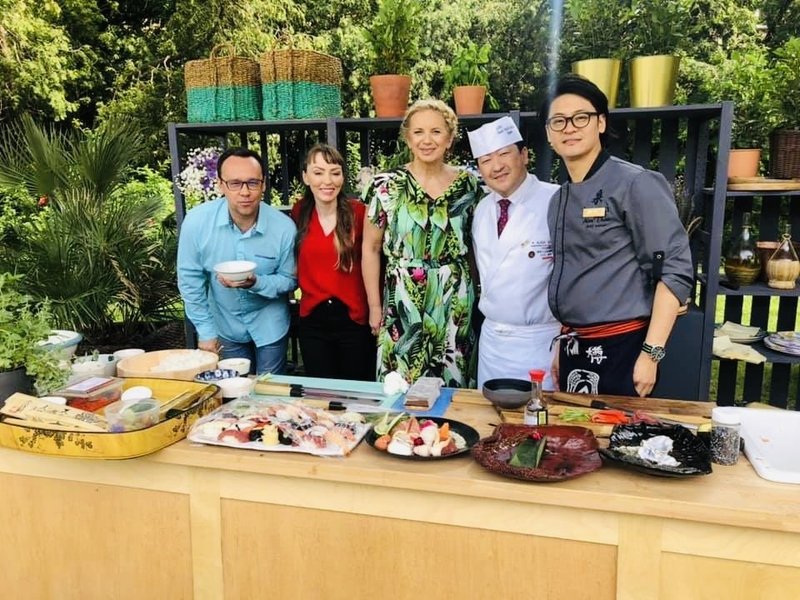
* TV recording in Warsaw, the capital of Poland.
Speaking of sushi in Japan, tuna is popular, but what kind of material is popular overseas?
"Salmon is popular everywhere. Salmon is even more popular than tuna in Japan. The main reason why salmon is used is probably the color. Many overseas people have never eaten raw fish, so the color of the fish first The salmon doesn't change color over time, it's soft, and it's sloppy when you put it in your mouth.Abroad people don't like tight fish. Flounders and sea breams are popular in Japan because they are crisp and chewy, but overseas they are popular because they don't chew and spill.”
Tuna also has a beautiful red color, is it popular?
"Tuna is lean, but it darkens over time. The same is true for the bonito, but the color of the tuna also changes quickly.
But the taste doesn't change. Even if the color changes due to the pigment, there is no problem with freshness. Japanese people have a culture of eating raw fish, so they like oiled tuna, such as slightly darkened Indian tuna. But overseas, pale yellowfin tuna is more popular, even though it has less fat. ''
“Sushi is scary” !? Food poisoning and countermeasures over raw fish.

While Japanese sushi is being enjoyed overseas, the number of people who think that sushi is "afraid of food poisoning" is increasing.
"In the past, Japanese food had the image of being healthy and good for the body, but the last few years have been different. More and more people have the image of being" scary "about Japanese food. Now, it is said that there are 400,000 people in the world holding sushi and selling them in the shop, but some chefs do not know how to handle raw fish and crustaceans and try to serve them .
Until now, sushi that had been used abroad generally used heated fish such as roll sushi. However, along with the spread of Japanese food culture, the number of places offering raw sushi is also increasing. The problem is food poisoning and crustacean allergy.
Crustaceans such as shrimps and crabs can cause allergic symptoms called anaphylaxis when used as is. For this reason, we sushi chefs always prepare and serve. Chefs holding sushi abroad sometimes give up without knowing that. Adults may only need to feel itchy around their mouths, but care should be taken when handling crustaceans because if a child has a crustacean allergy, it can cause anaphylactic shock and difficulty breathing .
If you eat Anisakis without processing it, you will suffer severe abdominal pain.
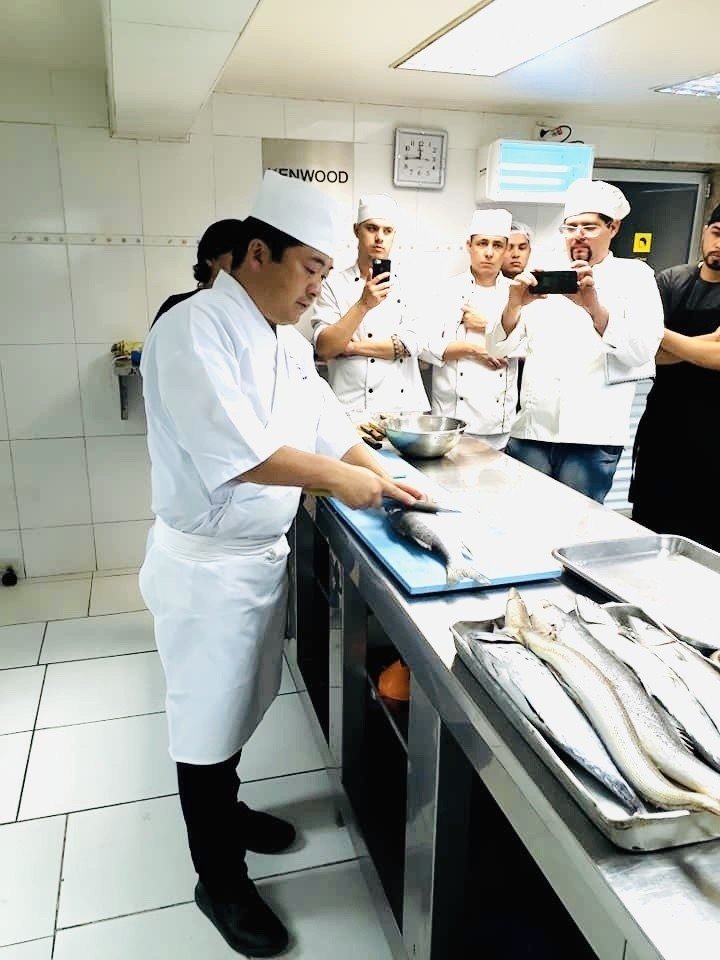
In addition, there is a problem of Anisakis food poisoning when dealing with raw fish. In Japan, there was a story that a few days ago, celebrities ate anisakis, which had been infested with fish, together with the fish and treated them at the hospital.
Anisakis can find and deal with Japanese sushi chefs at the cooking stage immediately. However, if a person who doesn't know it filters out the fish, it may rarely enter the human body with the fish fillet and continue to live. Basically, Anisakis does not reach the stomach because it is processed during the cooking stage. However, in some rare cases, Anisakis can reach the stomach, and may even cut through the mucous membrane of the stomach. Then my stomach hurts.
In France and the UK, fish must be frozen before they can be sold as sashimi. In Japan, raw fish should be frozen below -20 degrees for 48 hours. This freezing time also varies depending on the country and region. For example, in California, let's freeze raw fish for 156 hours, about a week. But if you do that, it will be watery when you thaw the fish. Sushi isn't just about holding, and the chef needs to learn how to prepare the fish. ''
If water is not used to filter fish, Vibrio parahaemolyticus grows at a stretch.
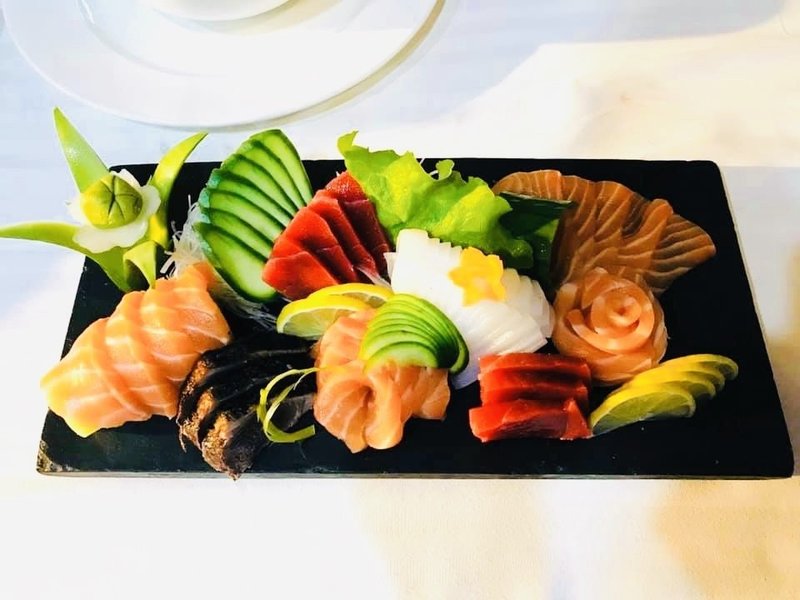
In addition to Anisakis, we also need to pay attention to one of the food poisonings, Vibrio parahaemolyticus.
"Vibrio parahaemolyticus is a bacterium that lives in seawater and marine fish and shellfish. Vibrio parahaemolyticus is a bacterium that adheres to fish scales when in seawater. In fact, Vibrio parahaemolyticus is vulnerable to fresh water. When you fish, you do it with fresh water, but in the West, it's a meat culture, and when you cook meat, on the contrary, you wipe it off as soon as the water flies. This causes intestinal Vibrio to grow.
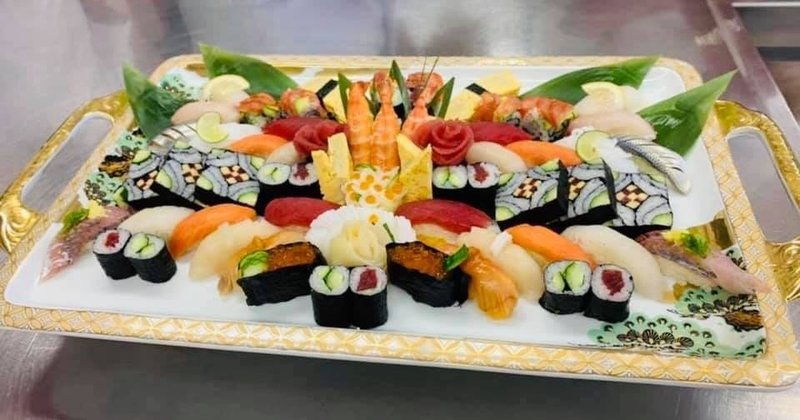
In addition, the sushi chef uses hand vinegar (tezu), a mixture of vinegar in water one-to-one, within reach, always moisturizes both hands and disinfects the hands. By using (Tezu), it is possible to prevent the growth of bacteria using the bactericidal action of bacteria. Some overseas sushi chefs misunderstand this "tetezu" as ordinary water. However, if only water is used, different bacteria will be generated this time, so it is very dangerous "
When chefs make sushi, if they imitate it, people who eat it will become poisoned. That's why chefs holding sushi overseas should be really careful here. It is said that hand vinegar and fruits have another important role besides the sterilizing effect.
"Adding dez also has the effect of cooling the palm. Cooling the palm prevents the temperature of the vinegared rice from rising due to the heat of the hand, making it harder for rice grains to stick to the hand.
When wearing vinyl gloves, bacteria tend to adhere to hands.

One thing I want to be aware of when talking about food poisoning is wearing vinyl gloves. Overseas, it is unsanitary to touch food with bare hands. For this reason, sushi chefs sometimes need to wear vinyl gloves.
However, holding on with vinyl gloves increased food poisoning. The reason is that some chefs don't wash their hands by working with vinyl gloves. The chef thinks his hands are clean and takes care of himself, but it's actually full of bacteria. In such a situation, no matter how much the chef wears vinyl gloves, it is unsanitary.
If the chef touches the fish when he touches it with his bare hands without gloves, it is immediately apparent that the fish is not fresh if the fish is more slimy than usual. However, if the chef wears plastic gloves, he does not know if the fish is rotten. If the appearance is fine, the chef will cook the rotten Sanana as it is. As a result, the customers who ate will eat up. This is a problem. There is, and now we are re-examined whether to use vinyl gloves.

Overseas, when I talk about these hygiene issues, I ask Japanese health centers to cooperate and explain while showing data such as how many bacteria are on my palms. In Japan, there is a culture of “stealing what your master does”. If you do that overseas, no one will follow you. Just show the evidence based on the data and explain until you are satisfied. But that's very important. "
Mr. Ogawa, who is fluent in language and can explain logically and carefully, has received many requests from embassies in various countries.
"I have a request from the embassy to teach me about Anisakis and crustacean allergy issues, food poisoning and how to handle raw fish. In fact, from March 12, I am in Milan & Rome, Italy & Belgium. , We had an offer from France and the Czech Republic and we were going, but we were all canceled with the new Coronavirus. Unfortunately, there will be another. "
I want to bring up many sushi chefs. I want many customers to be happy with it.
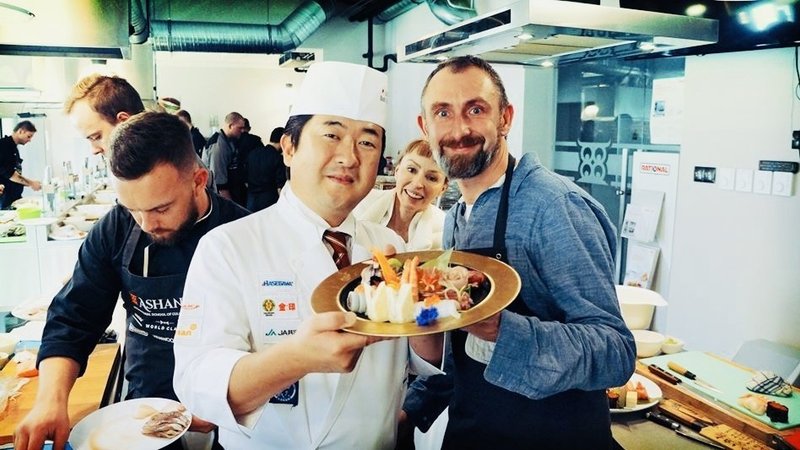
What kind of work will Ogawa do in the future?
"I would like to train as many sushi chefs as possible around the world. In general, sushi chefs dream of setting up their own shop, but when I was 29 I started my own. It was a difficult time due to the Lehman shock, etc. However, I have been doing the store for 10 years, and with that, my dream of having my own store has already been achieved.
So now I am focusing on nurturing juniors. Even if you open a shop, there are at most 20 or 30 customers. Visitors can be pleased by holding sushi. But if possible, I want to make more people happy. When you think about it, fostering sushi chefs can please their customers when they come to each restaurant. Therefore, I will focus on the training of juniors from now on. That's why I visit countries around the world and teach people about sushi culture and hygiene.
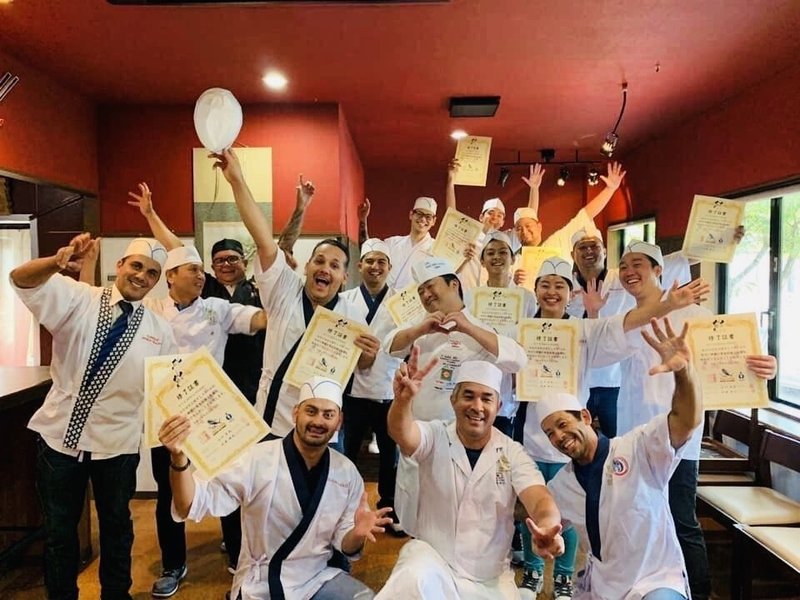
If you want to earn a high salary, you can definitely earn by doing the store yourself. I closed my shop and my income has been reduced by a quarter. "
Cuban artisans who make and use Japanese sushi even if there is no information.
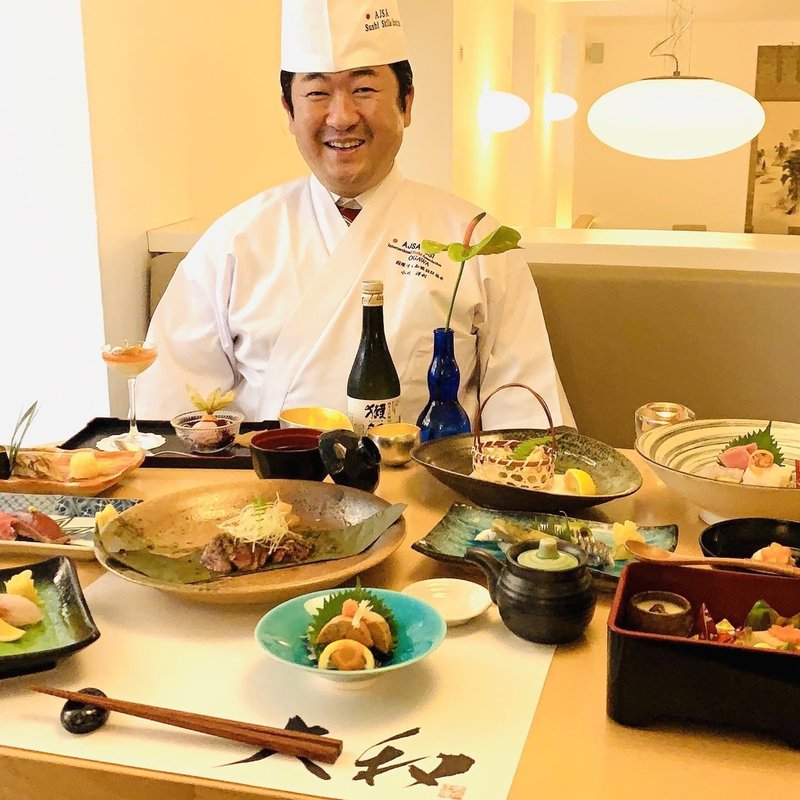
Ogawa has visited more than 60 countries so far, traveling around 30 cities in about 25 countries a year. Are there any cities or sushi that have left an impression?
"I'm Cuba. Cuba is a socialist country and a military government. So doctors and sushi chefs have the same salary. Since the nets are all shut out, it's hard to get outside information.
Actually, there are sushi restaurants in Cuba, but the sushi there is amazing. Anything that I saw in a book about how to make sushi or that I heard from people. Still, sushi restaurants are very popular. ''
Mr.Ogawa visited Cuba with the recording of TBS TV "Bukkumi Japanese". In Cuba, shari has a core and watery to make sushi. And strangely sweet.
"It's like putting sugar water on rice. When you're holding a shari, put a piece of fish in a cup and push the shari on top of it.
What was used in the Shari Cup was a lid for asthma medicine!寿司 It was a rare and rare sushi round (for more information, search for Buddha Japanese 6, Cuba).
"In Cuba, we can't get any information because we can't use the internet, so we thought about Japanese sushi and made original ones. We respected them and made better sushi. I wanted the store to be a thriving store and told them how to make it right. "
Full of fruits instead of seafood! Sushi style that is too original in Africa.

※In one European country, there was a strawberry sushi roll.
"Sushi is spread all over the world. There is sushi everywhere in the mountains. For example, there are nearly 100 sushi restaurants in the Czech Republic, where there is no sea.
Japanese have the image of using seafood for sushi, but in Africa, sushi comes from strawberries, bananas, and grapes.
Sushi is an appetizer in Brazil. After that comes the meat dish. Some sushi was dressed and fried. Same for Mexico. Every sushi in Europe contains cheese.
In Thailand, sushi is sold at food stalls when the outside temperature rises above 30 degrees. Besides, the fly was wanted. That's a bad hygiene and it's not good to sell. Still, when I ask Thai people, they can't help but eat. Eating at a food stall poses such a risk. "That's a great Thai culture, too."
The world is wide. Sushi may also undergo various changes depending on the country and region. Nevertheless, since raw fish are used, great care must be taken in terms of hygiene. I would like Mr. Ogawa to share delicious sushi utilizing the correct knowledge and the umami of the ingredients.
I become a "chef" who can make the chef happy.
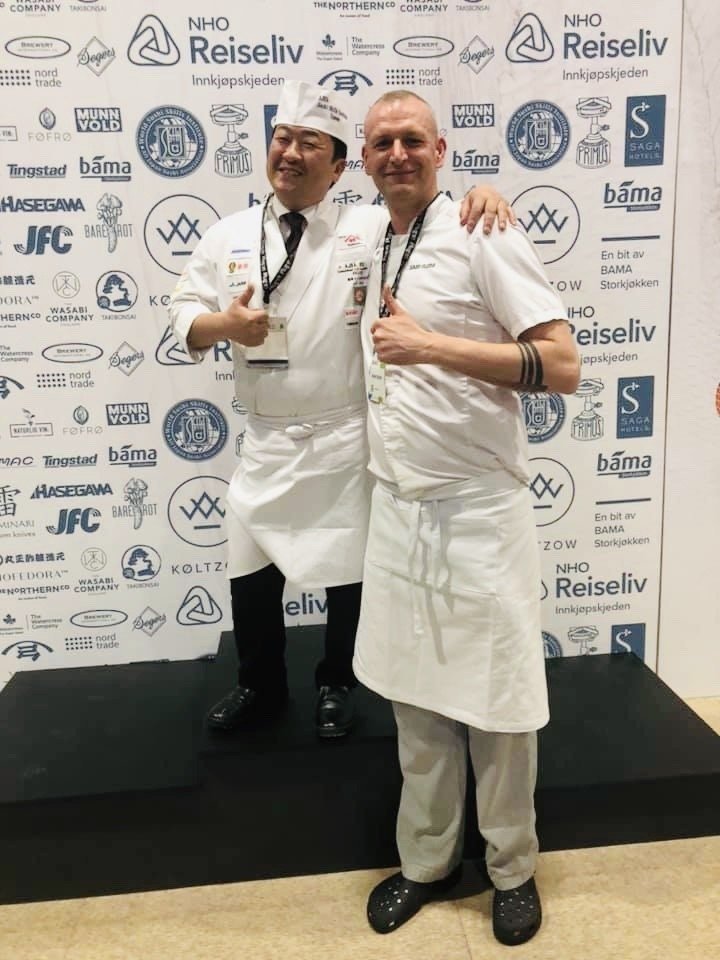
Mr.Ogawa has another goal.
"I want to improve the position of chefs. In Japan, France, China, etc., the position of chef has been established, but in the United States where there is no food culture, the position of chef is low.
Waitress and waitress who directly entertain customers are higher in rank than chefs. Cooks tend to be found in people who just work behind the kitchen. Therefore, it is said that over 90% of American kitchens are spoken in Spanish. There are only immigrants like Mexico, Peru and Venezuela.
In the kitchen of a Brazilian restaurant, the chefs all pack the leftovers of customers into plastic and take them home. They take it home and feed the children. Immigrant people who have no home and return home with leftovers. In other words, they don't need salary, they want food. There are many such countries in South America.
In Japan, in the past, many chefs were aliens. The chefs were just bad boys who lived and worked without money. I think the status of the chef was low in the world. In recent years, chefs such as Tatsuya Kawagoe, who can cook and are cool, have increased, and I think chefs have become fashionable occupations.
I have traveled to about 60 countries around the world and have seen many people involved in food work. That's why I'm working on my current job to improve the status of people involved in food.
"Until now I had no pride in holding sushi," one Tibetan confession.

Five or six years ago, when I had a workshop in India, a Tibetan man came to me and told me.
‟I didn't think the sushi chef was so great. Until now I had no pride in holding sushi, but I was impressed by your training. "
There are still many places where sushi chefs have not yet learned the depth of their techniques. In some cases, sushi can be as simple as placing fish on white rice.
The sushi chef seems to be a sandwich chef. However, if you take the actual training, you will understand that even a single slice of skill requires such a skill.
I want to make sure that sushi chefs are recognized for their skills and status, have a good salary, and have a good job. I think some professionals are good in terms of position and treatment. But it is still only in some countries.
Nowadays, the number of sushi chefs is increasing not only for men but also for women.
Indonesian sushi chefs are mostly women. It can be cultural. I think there may be a shop where female sushi chefs are active. We male sushi chefs also welcome women. Women have the beauty of women.
Even in Japan, there is an image of Japanese people holding sushi because they were island nations. However, international marriages and immigrants from abroad are increasing now. For this reason, I think that people from various countries will be holding sushi in the future.
Some elderly people may not want to eat sushi held by foreigners. But maybe young people will accept foreign chefs. I want to spread sushi culture and technology more and more. ''
Opened 20 stores in Norway. A Philippine chef's sushi dream that began with washing dishes.

Mr.Ogawa was the first chef to speak in Norway Stavanger's "Sabi Omakase", who was a Michelin star and is actually a Filipino.
"He came from the Philippines to work in Norway, the eldest of nine siblings, and went abroad because he had to feed the other siblings.
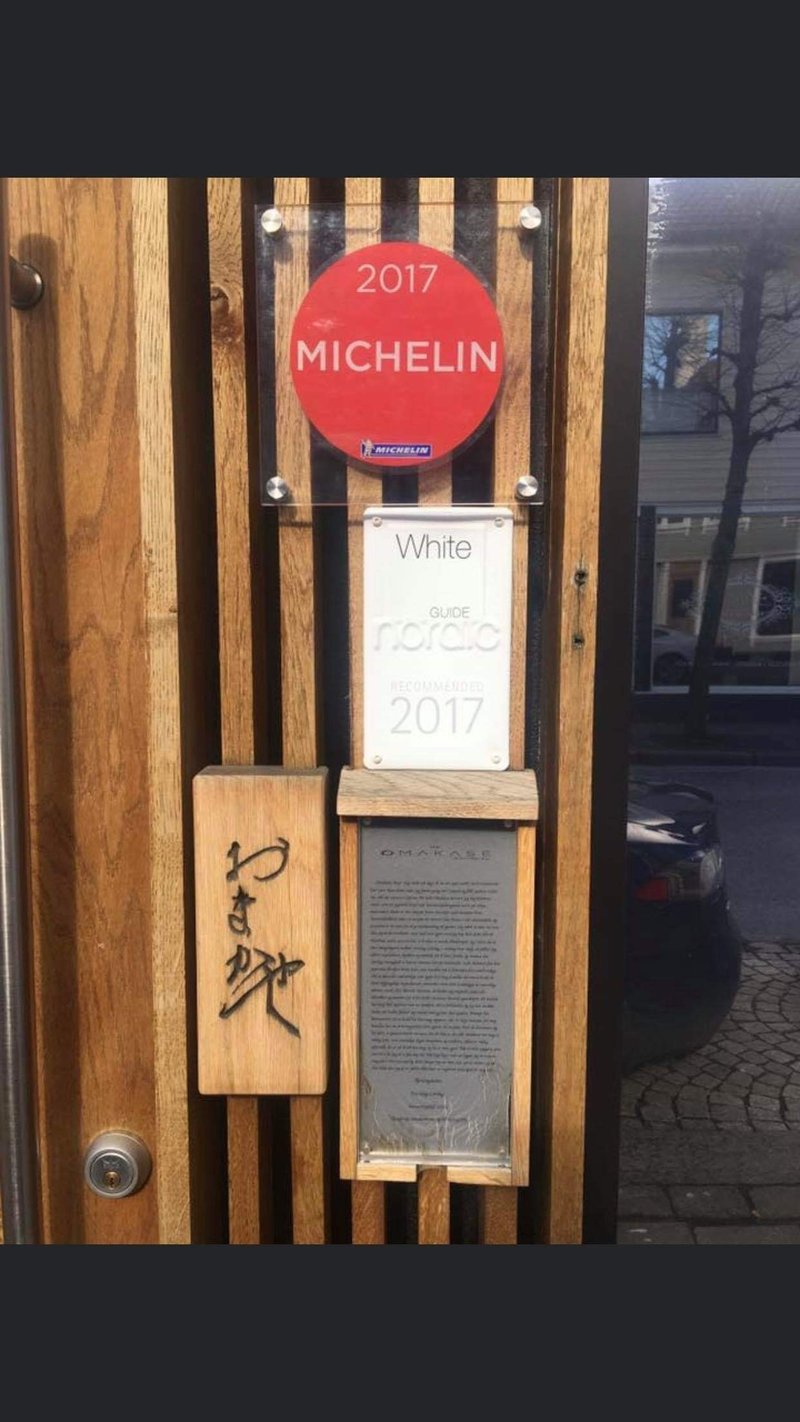
* Roger asakil joya, the first Michelin star to win a Japanese sushi restaurant in Norway.
He came to Norway and had no job, so he started with washing dishes. In general, Japanese sushi restaurants have an apprenticeship and do all the training during the training period. Overseas, however, cleaning specialists only clean, dishwashing specialists only dishwashers, and waiters are only waiters. But he desperately studied because he wanted to be a cook, and became a chef.
In addition, he saved up money and became a share owner of the restaurant. From there he increased the number of shops. He is now the owner with 20 stores in Norway. And in 2017, the restaurant he owns won Michelin. It's a sushi dream. Now he sends money to the Philippines where his brothers live and feeds the whole family.
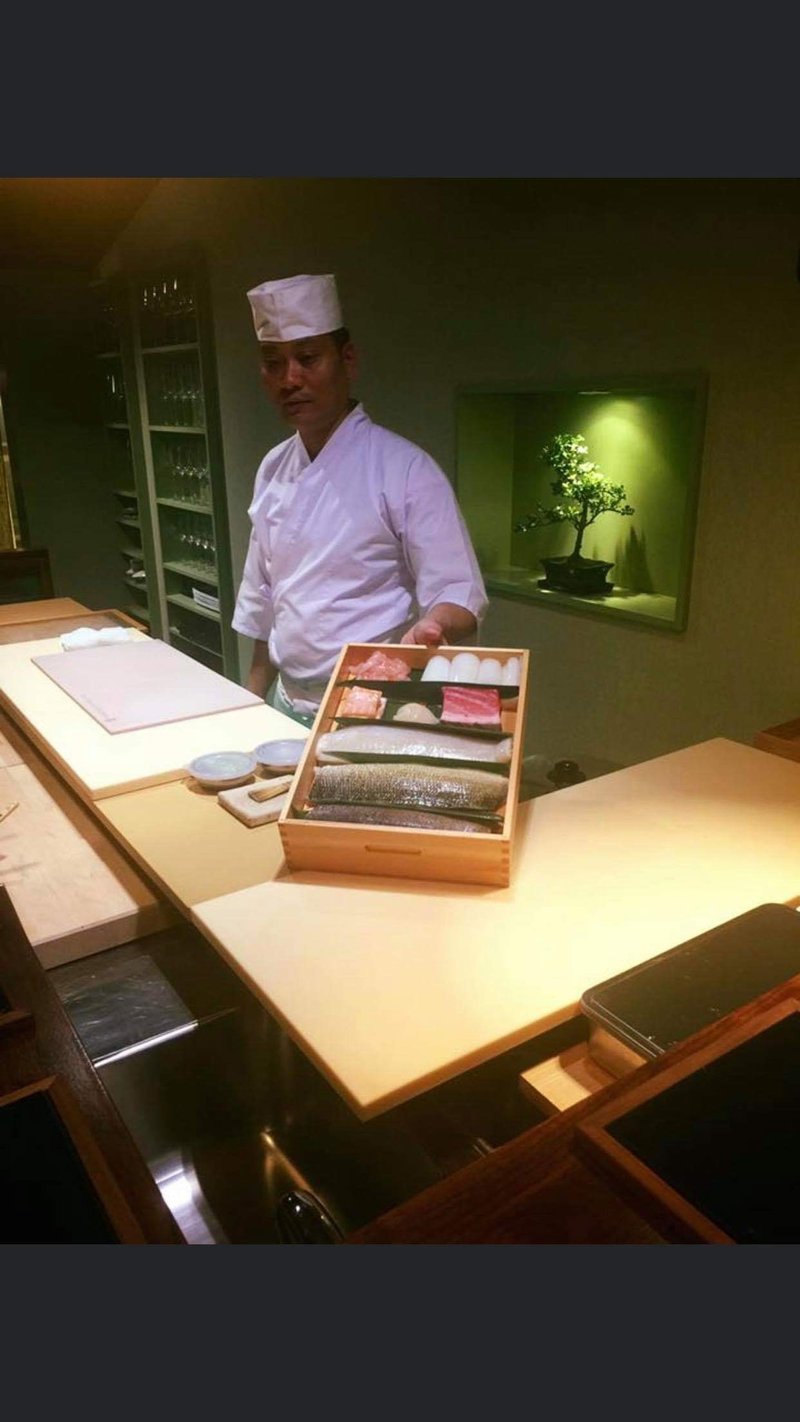
The cooks I supervised have their own shops, making restaurants that many people visit. I'm very happy that these chefs say thank you. Now I want to bring up more cooks. And sushi makes me happy. That's what I want to do best. "
A sushi story from around the world that started with Filipinos and ended with Filipinos.
Actually, I started interviewing Hirotoshi Ogawa this time about talking with a sushi teacher with an online English conversation teacher I do every morning. He said he had sushi in the Philippines, but he had no taste or had a stomach ache. In writing that note in a note, I wanted a picture of a delicious sushi, and I borrowed a photo from Mr. Ogawa, who always had a delicious sushi photo on FB. When I posted the blog to FB, a comment from Mr. Ogawa's fan, MS said, "I want to hear an interview with Mr. Ogawa", and I decided to interview Mr. Ogawa in a hurry. By the way, Japan was just after 11am, but Oslo, Norway was 3am. After the tournament was over, I was drinking with my colleagues at the launch, and I was told to talk. He said he was busy at work in the daytime. Thank you for being tired.
If you want to know more about Ogawa's story, please read this book.
Here's a story about the morning when I interviewed Ogawa. I hope you can read both together.
The same content is written in Japanese.
フィリピンセブ島の孤児院で出会った子どもたちをサポートします😊✨✨子どもたちが大人になったとき、今度は誰かをサポートしてあげられたら素敵ですね❤️
